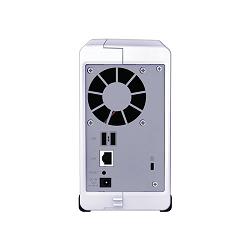|
Synology DS207 Disk Station NAS Server
Overview of the DS207 Disk Station
The DS207 is 2-bay NAS server that uses SATA drives. Drives can be setup in RAID 0 or RAID 1. This product is more than just a NAS device. It’s also an encrypted network backup drive, a file server, web server with PHP and MySQL, an iTunes media server and integrates with Windows Active Directory. It allows you to share files, music, photos and video across your network. More than that, this device is really a small server that can be accessed by any type of client, Windows, Linux or Mac. All these features in a simple Plug and Play device that only requires a Phillips screwdriver and browser to setup.
Click on the Thumbnail for a Larger Image
Features List:
Specifications:
|
 |
| « Introduction | Testing and Conclusion » |







